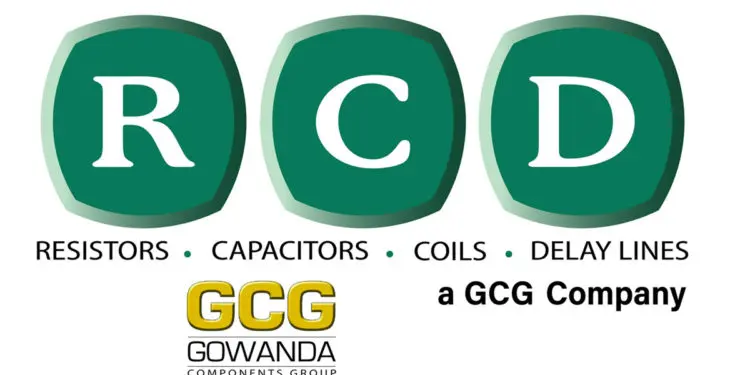Gowanda, NY (USA) – Gowanda Components Group is pleased to announce the acquisition of RCD Components, headquartered in Manchester, New Hampshire. RCD is a manufacturer of passive components – including resistors, capacitors, coils and delay lines – for the commercial, military and aerospace industries. This is the ninth acquisition for GCG within the last seven years.
RCD’s resistors, capacitors, coils and delay lines augment GCG’s inductor offerings
“The addition of RCD to Gowanda Components Group expands the breadth of our passive component offerings to the electronic design community and enhances our passive technology capabilities,” said Don McElheny, CEO of GCG. “As a result of our combined strengths we look forward to developing unique solutions to address board level design challenges of the global electronics industry,” McElheny added.
Terms of the deal were not disclosed but GCG has stated that RCD will maintain its operations in Manchester as well as their support facilities in the Caribbean and Asia. In addition to RCD’s facilities, GCG has seven other manufacturing and design facilities located within the United States.
Gowanda Components Group consists of two divisions. The Magnetics Division includes Gowanda Electronics, DYCO Electronics, HiSonic, Butler Winding, Communication Coil, Gowanda REM-tronics and now RCD Components. The Filters Division includes TTE Filters, Microwave Circuits and Instec Filters.
About Gowanda Components Group:
Gowanda Components Group (GCG) is a US-based, vertically integrated manufacturer of high performance and tight tolerance electronic components that address the needs of electronic design engineers around the world. Areas of expertise include magnetic devices, specialty filters and custom designs. GCG’s design capabilities and products enhance the performance and reliability of electronic systems in aerospace and defense, communications infrastructure and medical applications. The individual business units that support Gowanda Components Group are Gowanda Electronics, TTE Filters, Instec Filters, Communication Coil, Butler Winding, Microwave Circuits, DYCO Electronics, HiSonic, Gowanda REM-tronics and now RCD Components.
About RCD Components:
RCD Components (est. 1973) is a leading manufacturer of resistors, capacitors, coils and delay lines for the commercial, military and aerospace industries. The company’s strengths include an Absolute Zero Defect program (ABZEDTM), a wide range of standard and customized products and short lead-times. The company’s main facility is in Manchester, New Hampshire. Additional facilities in the Caribbean and Asia provide support for medium to high volume production.































